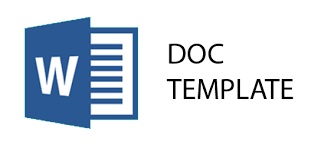Penguatan Citra Destinasi Melalui Pemasaran Kota, Event Wisata dan Pemasaran Media Sosial
DOI:
https://doi.org/10.37253/altasia.v2i1.541Keywords:
Pemasaran Kota; Event Wisata; Pemasaran Media Sosial; Citra Destinasi.Abstract
Penguatan citra destinasi wisata dapat dilakukan melalui strategi pemasaran kota/kab, event wisata dan pemasaran media sosial yang efektif. Saat ini, kompetisi antar kota/kab terus meningkat terutama di bidang pariwisata melalui kebijakan pemasaran kota yang ramah wisatawan, event wisata yang ikonik serta pemasaran media sosial yang masif. Citra destinasi yang kuat akan berimbas pada peningkatan jumlah kunjungan dan loyalitas wisatawan. Adapun tujuan dari penelitian ini adalah untuk menganalisis pengaruh hubungan pemasaran kota/kabupaten, event wisata dan pemasaran media sosial untuk menguatkan citra destinasi wisata di Maluku. Metodologi dalam penelitian ini didasarkan pada analisis kuantitatif dengan menggunakan Structural Equation Model (SEM) Lisrel 8,2 untuk mengkonfirmasi teori dan melihat hubungan variabel pemasaran kota/kabupaten, event wisata, pemasaran media sosial dan citra destinasi. Hasil dari penelitian ini menunjukkan bahwa pemasaran kota/kabupaten memiliki pengaruh lebih tinggi dalam menguatkan citra destinasi dibandingkan event wisata dan pemasaran media sosial. Hal ini menunjukkan bahwa strategi yang efektif dari pemerintah dalam memajukan pariwisata lebih berimbas langsung dan kuat mempengaruhi citra sebuah destinasi
Downloads
References
Avraham, E., & Ketter, E. (2008). Media Strategies For Marketing Places In Crisis.
Boo, S., & Busser, J. A. (2006). IMPACT ANALYSIS OF A TOURISM FESTIVAL ON TOURISTS DESTINATION IMAGES, 9, 223–237.
Daleela, S., Wahid, M., & Khasimah, N. (2016). First-time and Repeat Visitors to Langkawi Island , Malaysia. Procedia Economics and Finance, 35(October 2015), 622–631. https://doi.org/10.1016/S2212-5671(16)00076-9
Dimanche, F. (2016). From attractions to experiential marketing - The contributions of events to New Tourism From attractions to experiential marketing : The contributions of events to “ New †Tourism, (March).
Gertner, D. (2011). A ( tentative ) meta-analysis of the ‘ place marketing ’ and ‘ place branding ’ literature. Journal of Brand Management, 19(January), 112–131. https://doi.org/10.1057/bm.2011.13
Getz, D. (2008). Event tourism : Definition , evolution , and research, 29, 403–428. https://doi.org/10.1016/j.tourman.2007.07.017
Getz, D., & Page, S. J. (2016). Progress and prospects for event tourism research. Tourism Management, 52, 593–631. https://doi.org/10.1016/j.tourman.2015.03.007
Golob, A., & Jakulin, T. J. (2014). STANDARDIZATION AND CLASSIFICATION OF EVENTS, 11(1), 67–73.
Gursoy, D., Kim, K., & Uysal, M. (2004). Perceived impacts of festivals and special events by organizers : an extension and validation, 25, 171–181. https://doi.org/10.1016/S0261-5177(03)00092-X
Jabreel, M., Moreno, A., & Huertas, A. (2016). Journal of Destination Marketing & Management Semantic comparison of the emotional values communicated by destinations and tourists on social media. Journal of Destination Marketing & Management, 1–14.
https://doi.org/10.1016/j.jdmm.2016.03.004
Kaplan, A. M., & Haenlein, M. (2010). Users of the world , unite ! The challenges and opportunities of Social Media. https://doi.org/10.1016/j.bushor.2009.09.003
Kaplanidou, K., & Vogt, C. (2010). The Meaning and Measurement of a Sport Event Experience Among Active Sport Tourists. Journal of Sport Management, 544–566.
Kim, S.-E., Lee, K. Y., Shin, S. Il, & Yang, S.-B. (2017). Effects of tourism information quality in social media on destination image formation: The case of Sina Weibo. Information & Management, 54(6), 687–702. https://doi.org/10.1016/j.im.2017.02.009
Kiralova, A., & PavlÃ, A. (2015). Development of Social Media Strategies in Tourism Destination. Procedia - Social and Behavioral Sciences 175 ( 2015 ) 358 – 366 International, 175, 358–366. https://doi.org/10.1016/j.sbspro.2015.01.1211
Kladou, S., & Mavragani, E. (2015). Journal of Destination Marketing & Management Assessing destination image : An online marketing approach and the case of TripAdvisor. Journal of Destination Marketing & Management, (2008), 1–7. https://doi.org/10.1016/j.jdmm.2015.04.003
Line, N. D., & Wang, Y. (2016). Journal of Destination Marketing & Management A multi-stakeholder market oriented approach to destination marketing. Journal of Destination Marketing & Management, (1), 1–10. https://doi.org/10.1016/j.jdmm.2016.03.003
Litvin, S. W., Goldsmith, R. E., & Pan, B. (2008). Electronic word-of-mouth in hospitality and tourism management, 29,458–468.
https://doi.org/10.1016/j.tourman.2007.05.011
Liu, Y. (2015). Major event and city branding An evaluation of Liverpool as the 2008 European Capital of Culture, 8(2), 147–162. https://doi.org/10.1108/JPMD-02-2015-0007
Mariani, M. M., Buhalis, D., Longhi, C., & Vitouladiti, O. (2015). Managing change in tourism destinations: Key issues and current trends. Journal of Destination Marketing & Management, 2(4), 269–272.
Mariani, M. M., Di, M., & Mura, M. (2016). Facebook as a destination marketing tool : Evidence from Italian regional Destination Management Organizations. Tourism Management, 54, 321–343. https://doi.org/10.1016/j.tourman.2015.12.008
Middleton, Vi., & Clark, J. R. (2001). Marketing in Travel and Tourism (Third Edit). Butterworth Heinemann.
PavlÃ, A. (2015). Development of Social Media Strategies in Tourism Destination. Procedia - Social and Behavioral Sciences 175 ( 2015 ) 358 – 366 International, 175, 358–366. https://doi.org/10.1016/j.sbspro.2015.01.1211
Pike, S. (2008). Destination Marketing. An Integrated marketing Communication Approach.
Tham, A., Croy, G., Mair, J., & Croy, G. (2013). Social Media in Destination Choice : Distinctive Electronic Word-of-Mouth Dimensions Social Media In Destination Choice : Distinctive Electronic Word-Of-Mouth, (October), 37–41. https://doi.org/10.1080/10548408.2013.751272
Tripkovic Markovic, A. (2010). Tourism Planning : Contribution of Tourism To Socio-Economic Development of Montenegro. Tourism and Hospitality Management, 1289–1304.
Xiang, Z., & Gretzel, U. (2010). Role of social media in online travel information search. Tourism Management, 31(2), 179–188. https://doi.org/10.1016/j.tourman.2009.02.016
Yuan, L. I. U., & Chong, C. (2007). The effects of festivals and special events on city image design, 1(2), 255–259. https://doi.org/10.1007/s11709-007-0032-0
Zeng, B., & Gerritsen, R. (2014). What do we know about social media in tourism ? A review. TMP, 10, 27–36. https://doi.org/10.1016/j.tmp.2014.01.001
Published
Issue
Section
License
The article publication is wholly owned by the Indonesian Tourism Journal (ALTASIA).






.png)





